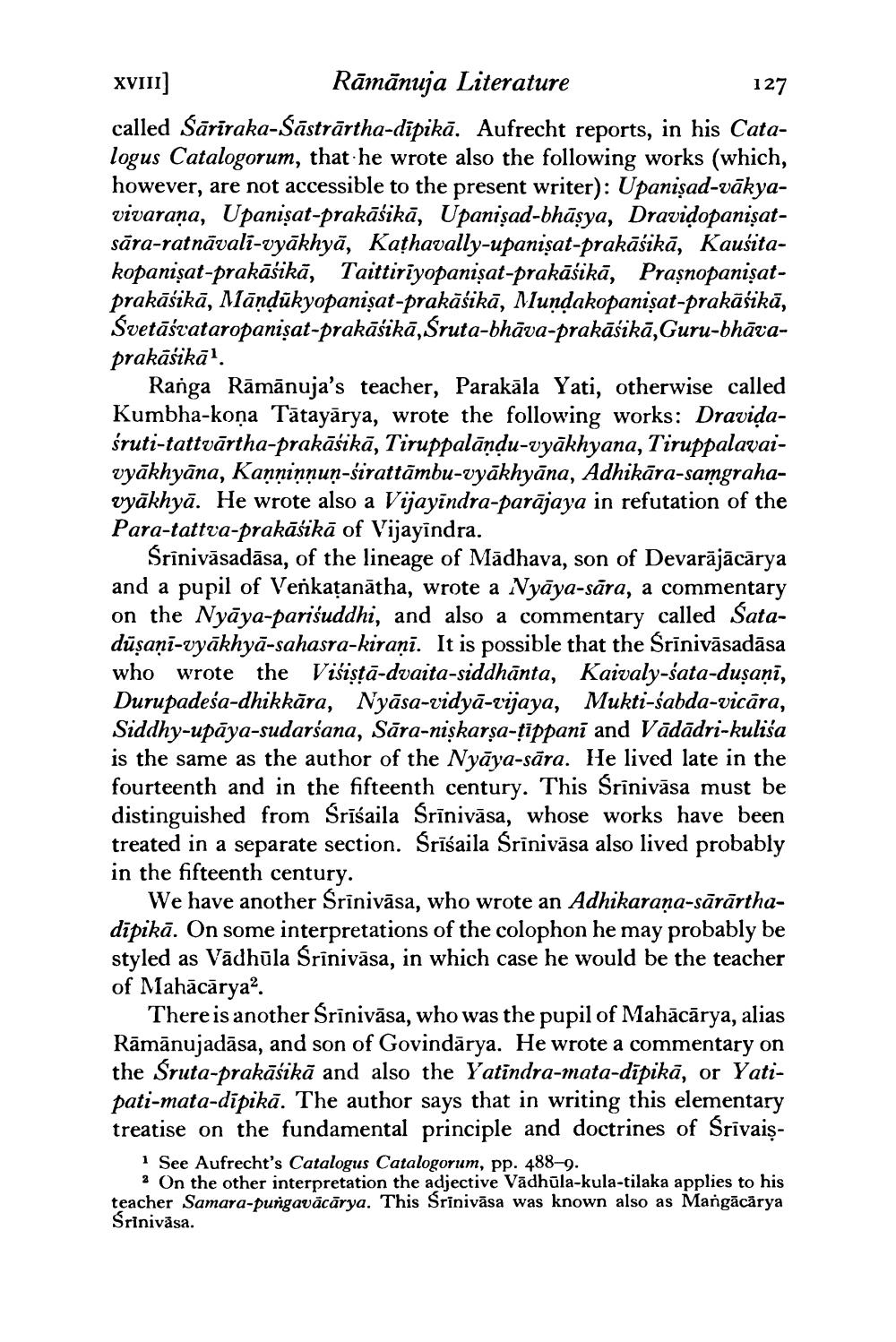________________
127
XVIII)
Rāmānuja Literature called Sārīraka-Šāstrārtha-dipikā. Aufrecht reports, in his Catalogus Catalogorum, that he wrote also the following works (which, however, are not accessible to the present writer): Upanişad-vākyavivaraña, Upanişat-prakāśikā, Upanişad-bhāsya, Dravidopanişatsāra-rat nāvali-vyākhyā, Kathavally-upaniyat-prakāśikā, Kaušitakopanışat-prakāśikā, Taittiriyopanișat-prakāśikā, Prașnopanişatprakāśikā, Māndukyopanışat-prakāśikā, Mundakopanişat-prakāśikā, Svetāśvataropanışat-prakāśikā, Śruta-bhāva-prakāśikā,Guru-bhāvaprakāśikāl.
Ranga Rāmānuja's teacher, Parakāla Yati, otherwise called Kumbha-koņa Tātayārya, wrote the following works: Dravidaśruti-tattvārtha-prakāśikā, Tiruppalāndu-vyākhyana, Tiruppalavaivyākhyāna, Kanniņnun-sirattāmbu-vyākhyāna, Adhikāra-samgrahavyākhyā. He wrote also a Vijayındra-parājaya in refutation of the Para-tattva-prakāśikā of Vijayîndra.
Srinivāsadāsa, of the lineage of Mādhava, son of Devarājācārya and a pupil of Verkațanātha, wrote a Nyāya-sāra, a commentary on the Nyāya-parisuddhi, and also a commentary called Satadüşaņi-vyākhyā-sahasra-kiraņī. It is possible that the Srinivāsadāsa who wrote the Višistā-dvaita-siddhānta, Kaivaly-sata-duṣaṇī, Durupadeśa-dhikkāra, Nyāsa-vidyā-vijaya, Mukti-sabda-vicāra, Siddhy-upāya-sudarśana, Sāra-nişkarșa-țīppanī and Vādādri-kulisa is the same as the author of the Nyāya-sāra. He lived late in the fourteenth and in the fifteenth century. This Srinivāsa must be distinguished from Srisaila Srīnivāsa, whose works have been treated in a separate section. Śrīśaila Srinivāsa also lived probably in the fifteenth century.
We have another Srinivāsa, who wrote an Adhikarana-sārārthadīpikā. On some interpretations of the colophon he may probably be styled as Vādhūla Srinivasa, in which case he would be the teacher of Mahācārya.
There is another Śrīnivāsa, who was the pupil of Mahācārya, alias Rāmānujadāsa, and son of Govindārya. He wrote a commentary on the Sruta-prakāśikā and also the Yatindra-mata-dipikā, or Yatipati-mata-dipikā. The author says that in writing this elementary treatise on the fundamental principle and doctrines of Srivais
1 See Aufrecht's Catalogus Catalogorum, pp. 488-9.
2 On the other interpretation the adjective Vādhūla-kula-tilaka applies to his teacher Samara-pungavācārya. This Srinivāsa was known also as Mangācārya Srinivasa.




